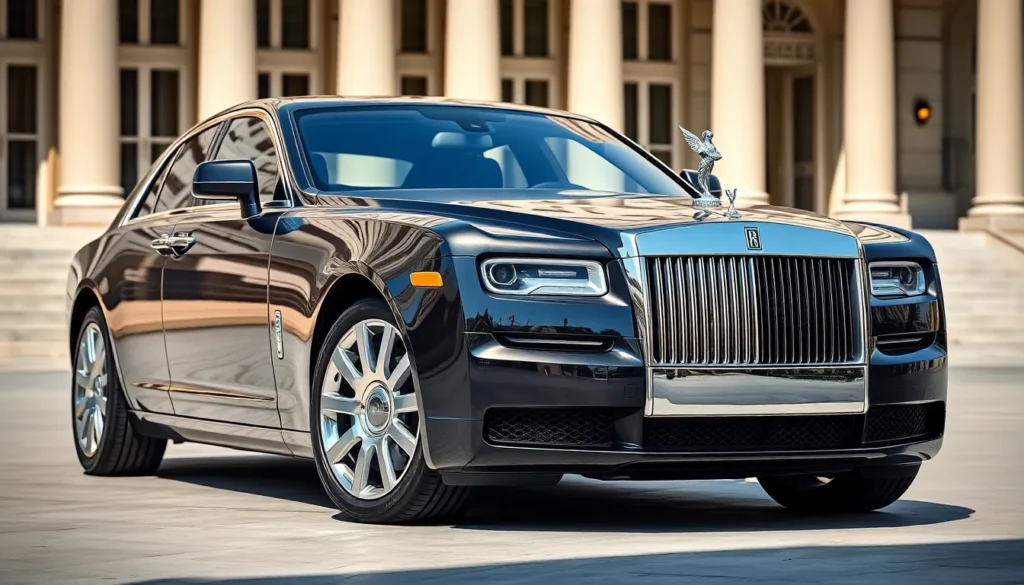When we think about luxury automotive design, nothing quite captures the essence of timeless elegance like the Rolls-Royce aesthetic. This iconic British brand has spent over a century perfecting an unmistakable visual language that speaks to sophistication, craftsmanship, and understated power. From the Spirit of Ecstasy gracefully perched atop the grille to the hand-polished chrome and sumptuous leather interiors, every element embodies automotive artistry at its finest.
We’ve watched Rolls-Royce evolve while maintaining its core design philosophy that luxury shouldn’t shout—it should whisper with confidence. The brand’s commitment to bespoke details, from starlight headliners to personalized coachlines, creates vehicles that aren’t just transportation but rolling works of art.
Understanding the Rolls-Royce aesthetic means appreciating how traditional British craftsmanship meets modern innovation. It’s about recognizing why this design language continues to influence luxury brands across industries and why discerning customers worldwide consider it the ultimate expression of automotive refinement.
The Timeless Appeal of Rolls Royce Aesthetic
Rolls Royce aesthetic transcends fleeting design trends through its unwavering commitment to classical proportions and refined elegance. We observe how the brand’s visual language maintains consistency across decades while incorporating subtle evolutionary elements that keep each model contemporary. The distinctive long bonnet creates an imposing road presence that immediately signals luxury and exclusivity.
Visual Harmony Elements
| Design Component | Key Characteristics | Impact on Aesthetic |
|---|---|---|
| Proportions | Extended wheelbase, elevated seating position | Creates commanding presence |
| Chrome Details | Hand-polished surfaces, precise placement | Adds sophisticated brilliance |
| Paint Finishes | 9-layer process, mirror-like depth | Produces unmatched visual richness |
| Interior Materials | Finest leather, real wood veneers | Delivers tactile luxury experience |
Classic design principles anchor every Rolls Royce model in timeless sophistication. We recognize how the brand avoids aggressive styling cues that date quickly, instead favoring graceful lines and balanced proportions. Each vehicle maintains the signature grille design that’s remained fundamentally unchanged since 1904, creating instant brand recognition across generations.
Heritage Design DNA
Traditional craftsmanship methods preserve the authentic Rolls Royce aesthetic through meticulous attention to detail. We see artisans hand-selecting wood grains and leather hides to ensure perfect color matching and texture consistency. The coach doors open at 85-degree angles, providing effortless entry while maintaining the vehicle’s stately appearance. Custom paint options include over 44,000 available colors, allowing owners to personalize their vehicles while maintaining design integrity.
Modern manufacturing techniques enhance traditional aesthetic elements without compromising their authentic character. We notice how LED lighting technology illuminates the Spirit of Ecstasy while preserving its classic silhouette. The starlight headliner incorporates 1,340 fiber optic lights hand-woven into the roof fabric, creating a celestial ambiance that modernizes the interior experience.
Emotional connection drives the enduring appeal of Rolls Royce aesthetic beyond mere visual impact. We understand how owners develop personal relationships with their vehicles through bespoke customization options and exclusive ownership experiences. The aesthetic represents achievement and success while maintaining understated elegance that speaks to refined tastes rather than ostentatious display.
Iconic Design Elements That Define Luxury
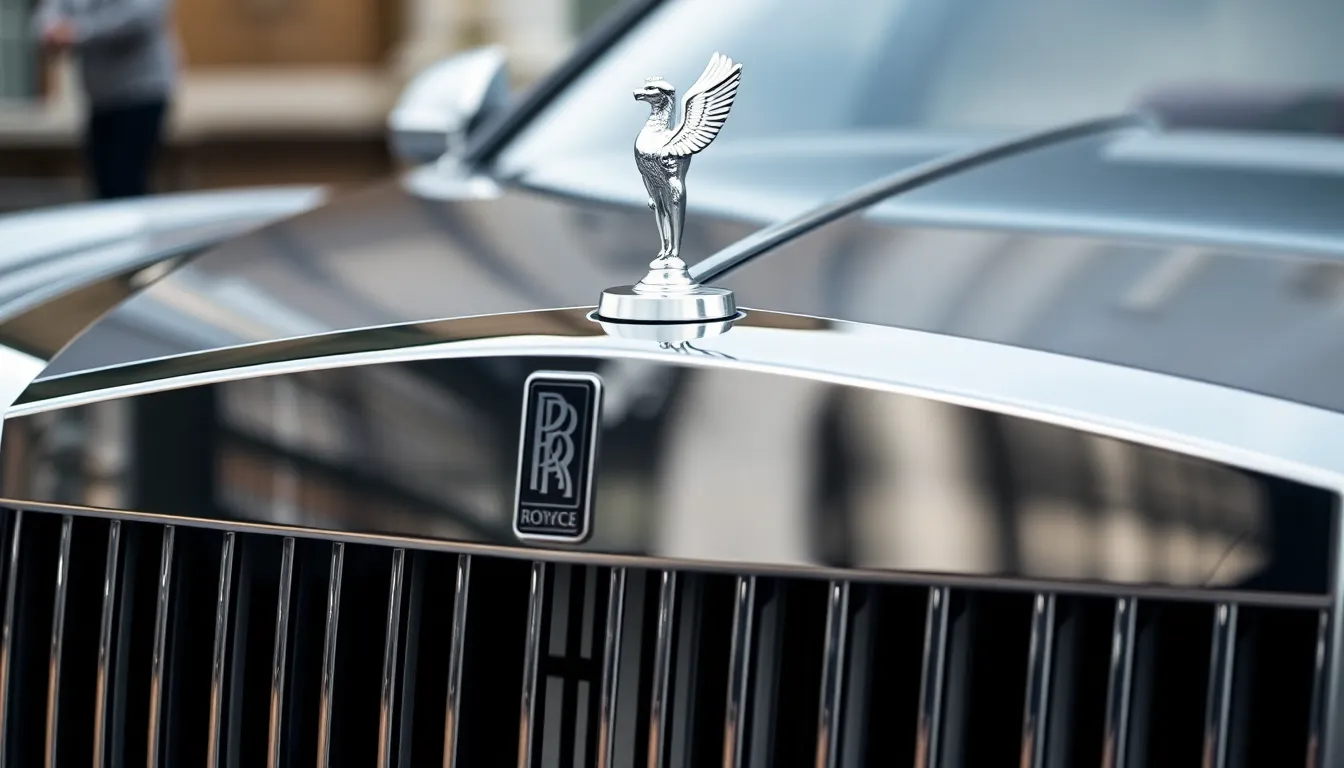
Rolls-Royce aesthetic centers on three distinctive elements that establish its unmistakable identity in the luxury automotive industry. These signature components work together to create the visual foundation that sets every Rolls-Royce apart from contemporary luxury vehicles.
The Distinctive Spirit of Ecstasy
Spirit of Ecstasy stands as the most recognizable automotive mascot in luxury vehicle history. Charles Robinson Sykes sculpted this elegant figurine in 1911, and it has graced every Rolls-Royce bonnet since that time. The statuette depicts a woman leaning forward with billowing robes that suggest movement and grace.
Modern versions incorporate retractable mechanisms that protect the ornament from theft while maintaining its classic proportions. Silver plated finishes reflect light beautifully, creating visual drama that captures attention at any angle. Custom variants allow owners to personalize this iconic element, with options including illuminated bases and precious metal alternatives.
Each Spirit of Ecstasy undergoes individual hand finishing to ensure perfect surface quality. Artisans polish every curve and contour to achieve the mirror like brilliance that defines Rolls-Royce standards. The ornament’s positioning creates perfect symmetry with the vehicle’s centerline, establishing visual balance that enhances the overall aesthetic composition.
Signature Grille and Pantheon Design
Pantheon grille architecture dominates the front fascia with commanding presence that announces Rolls-Royce heritage. Vertical chrome slats create distinctive patterns that catch light from multiple directions throughout the day. This design element maintains consistent proportions across different model lines while adapting to contemporary aerodynamic requirements.
Hand polished chrome construction requires extensive craftsmanship to achieve the flawless finish that customers expect. Master craftsmen spend hours on each grille assembly, ensuring that every surface meets exacting quality standards. The surrounding chrome surround integrates seamlessly with the vehicle’s body panels, creating smooth transitions that enhance visual flow.
Illuminated variants incorporate LED technology that highlights the grille’s geometric patterns during evening hours. These lighting elements activate automatically based on ambient conditions, providing dramatic emphasis without compromising the classic design integrity. The grille’s substantial size and weight contribute to the vehicle’s road presence while maintaining perfect alignment with body proportions.
Hand-Crafted Interior Craftsmanship
Interior environments showcase traditional British craftsmanship through meticulous attention to material selection and assembly techniques. Leather specialists hand select hides based on grain patterns, thickness, and surface quality to ensure consistency across all interior surfaces. Wood veneers come from single trees to maintain color and grain matching throughout the cabin.
Starlight headliner technology transforms roof panels into personalized constellations using fiber optic strands. Craftsmen hand place each strand to create custom patterns that reflect owner preferences or important astronomical events. The installation process requires precision positioning to achieve even light distribution and proper depth perception.
Embroidery work incorporates traditional techniques passed down through generations of British artisans. Thread selection includes premium materials like silk and precious metal strands that add subtle brilliance to custom monograms and decorative elements. Each stitch receives individual attention to ensure consistent tension and perfect alignment with design patterns.
Clock faces feature genuine mother of pearl or hand painted dials that complement interior color schemes. Mechanical movements provide traditional timekeeping accuracy while maintaining the classic aesthetic that defines Rolls-Royce interior design philosophy.
Evolution of Rolls Royce Visual Identity
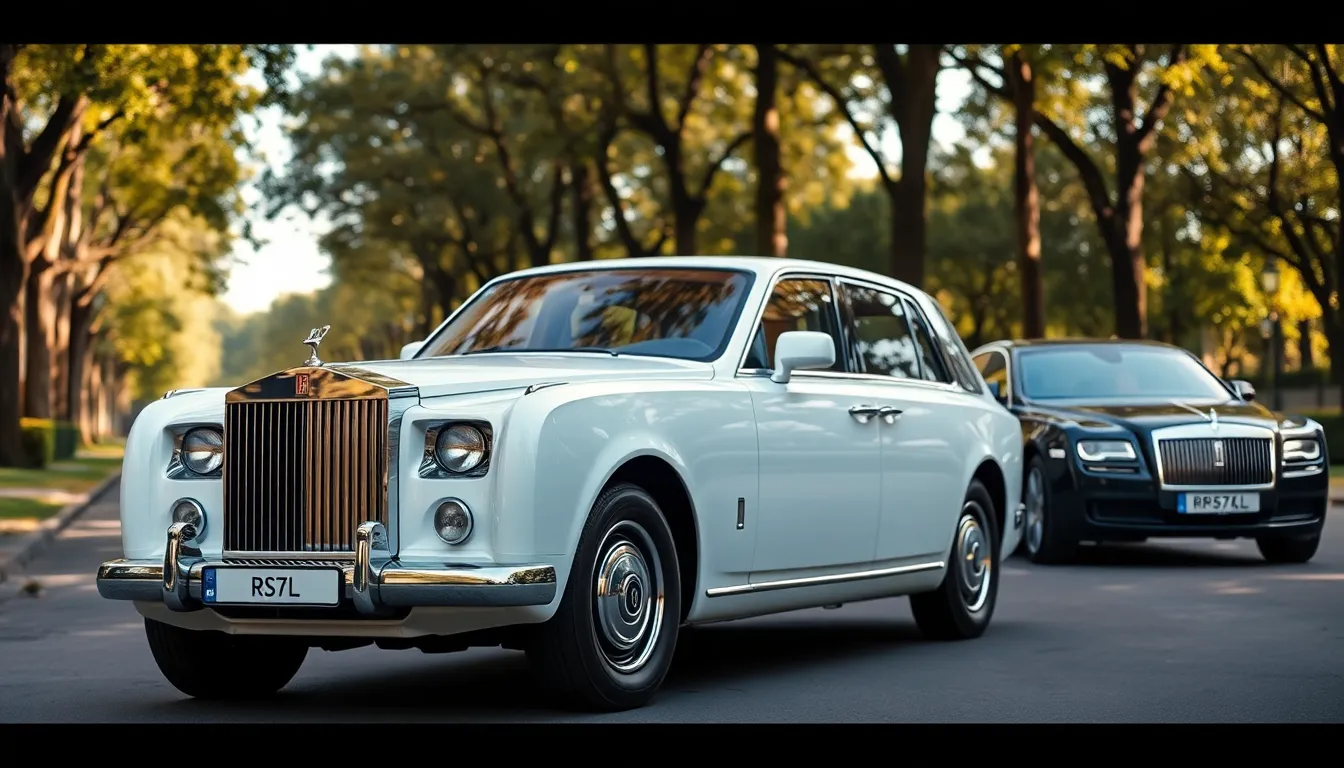
The visual identity of Rolls Royce has transformed through distinct eras while maintaining its core aesthetic principles. Each generation of vehicles demonstrates the brand’s ability to adapt contemporary design trends without compromising its fundamental luxury language.
Classic Models and Their Aesthetic Legacy
Classic Rolls Royce models established the foundational elements that continue to define the brand’s visual identity today. The Silver Ghost (1906-1925) introduced the vertical grille design and elongated proportions that became signature characteristics. Phantom I through III models refined these elements with increasingly sophisticated bodywork and chrome detailing that set industry standards for luxury automotive design.
Post-war models like the Silver Cloud series (1955-1965) demonstrated evolved aesthetic sophistication through updated proportions and modernized manufacturing techniques. These vehicles featured cleaner lines while preserving the commanding presence that distinguished Rolls Royce from competitors. The Corniche convertible models later expanded this design language with flowing bodywork that emphasized elegance through simplification rather than ornamentation.
Dawn and Silver Shadow models from the 1960s-1980s represented important aesthetic evolution through unibody construction and updated styling cues. These vehicles maintained traditional luxury elements like extensive chrome work and premium materials while incorporating contemporary design trends. Classic models established the template for modern interpretations through their emphasis on proportion balance and material quality over flashy styling elements.
Modern Interpretations of Traditional Elegance
Contemporary Rolls Royce models reinterpret classic aesthetic elements through modern manufacturing capabilities and design technologies. The current Phantom series preserves the vertical grille and Spirit of Ecstasy while incorporating LED lighting systems and advanced materials that enhance visual impact. Modern models feature updated proportions that maintain commanding presence while improving aerodynamic efficiency and structural performance.
Ghost and Wraith models demonstrate how traditional elegance translates to contemporary luxury through refined surface treatments and minimalist design approaches. These vehicles eliminate excessive ornamentation in favor of precise detailing and premium material applications that create sophisticated visual statements. Modern interpretations emphasize quality over quantity through carefully curated design elements that reference historical models without copying them directly.
Cullinan and Spectre models extend traditional aesthetic principles to new vehicle categories through consistent application of brand design language. The electric Spectre maintains visual continuity with gasoline models while incorporating aerodynamic improvements and updated technology integration. Modern interpretations preserve the emotional connection to classic models through familiar proportions and signature elements while delivering contemporary performance and efficiency standards that meet current market expectations.
Color Palette and Material Choices
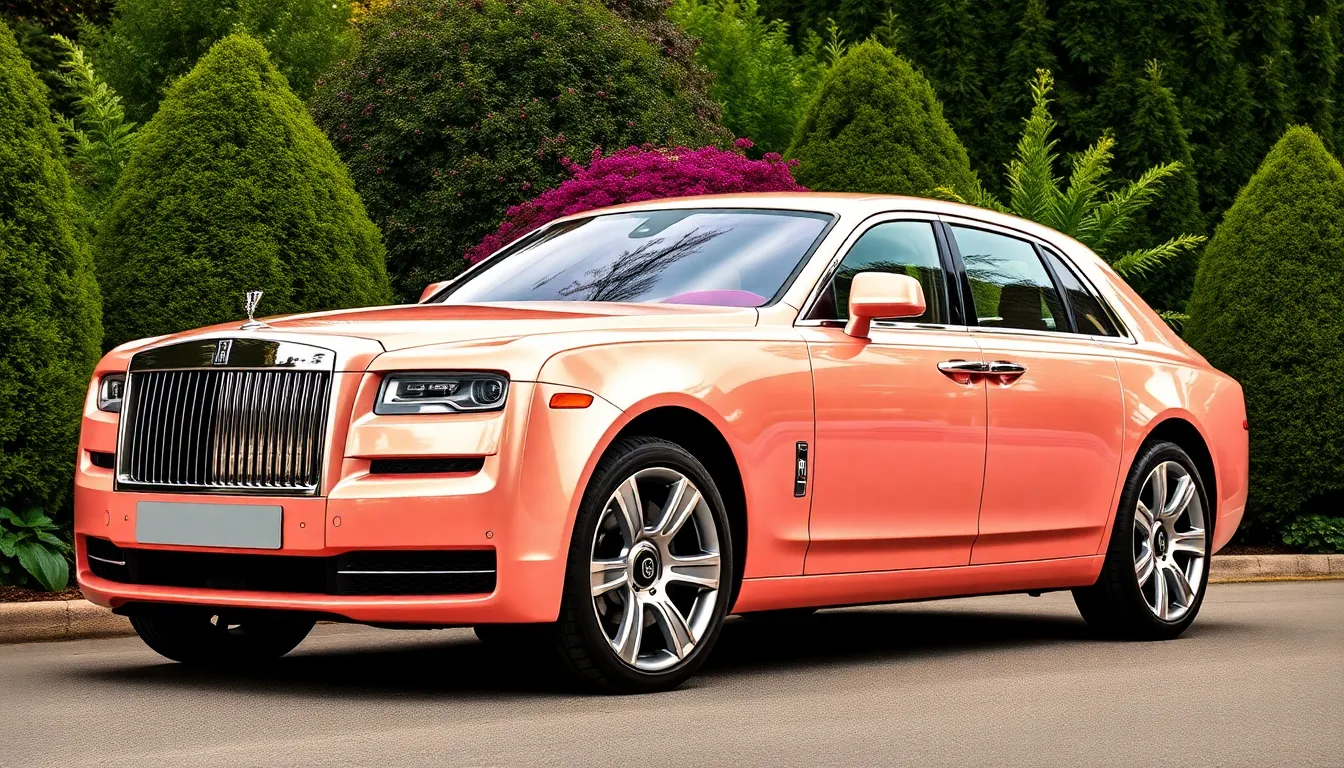
Rolls Royce aesthetic achieves its legendary status through carefully curated color palettes and premium material selections that define automotive luxury. Each vehicle showcases the brand’s commitment to excellence through exclusive paint formulations and meticulously sourced interior materials.
Exclusive Paint Options and Bespoke Finishes
Exclusive paint options transform every Rolls Royce into a personalized masterpiece through specialized color matching services and custom formulations. The company’s Goodwood facility houses over 44,000 paint samples, enabling customers to select from infinite color possibilities ranging from classic British Racing Green to contemporary metallics.
Bespoke finishes extend beyond traditional paint applications through specialized techniques including hand-painted coachlines, two-tone combinations, and pearlescent effects. Artisans apply each coachline using traditional brushwork methods, creating precise 2-millimeter strokes along body panels. Custom color creation involves up to 6 months of development, with paint specialists mixing unique formulations that match customer inspiration sources like jewelry, flowers, or architectural elements.
Traditional colors maintain their prominence within the Rolls Royce palette, with Emerald Green, Midnight Sapphire, and Ivory representing timeless selections. Contemporary options include Arctic White, Magma Red, and Bespoke Bronze, each requiring multiple application layers to achieve depth and brilliance. Matte finishes provide modern alternatives through specialized preparation processes that eliminate traditional gloss while maintaining color integrity.
Premium Leather and Wood Accents
Premium leather sourcing involves selecting hides from exact European suppliers who raise cattle in controlled environments free from barbed wire and insect damage. Each hide undergoes 5 weeks of processing through traditional tanning methods that preserve natural grain patterns and ensure consistent quality across interior surfaces.
Wood veneers showcase traditional British craftsmanship through carefully selected timber sources including English Oak, Walnut Burr, and Mahogany varieties. Master craftsmen match wood grain patterns across dashboard panels, door trim, and console surfaces to create seamless visual continuity. Individual veneer pieces require 48 hours of preparation including cutting, shaping, and hand-polishing before installation.
Leather color options cover 24 standard selections plus unlimited bespoke possibilities through custom dyeing processes. Popular choices include Seashell, Navy Blue, and Cognac leather treatments that complement exterior paint selections. Contrast stitching options provide additional customization through coordinated or contrasting thread colors applied using traditional saddle-stitching techniques.
Wood finishing techniques involve multiple lacquer applications and hand-polishing stages that create mirror-like surfaces while preserving natural wood characteristics. Specialized inlays incorporate mother-of-pearl, precious metals, and custom marquetry patterns that reflect individual customer preferences. Piano finish treatments provide contemporary alternatives through high-gloss black lacquer applications that create dramatic visual impact against leather surfaces.
The Psychology Behind Rolls Royce’s Visual Appeal
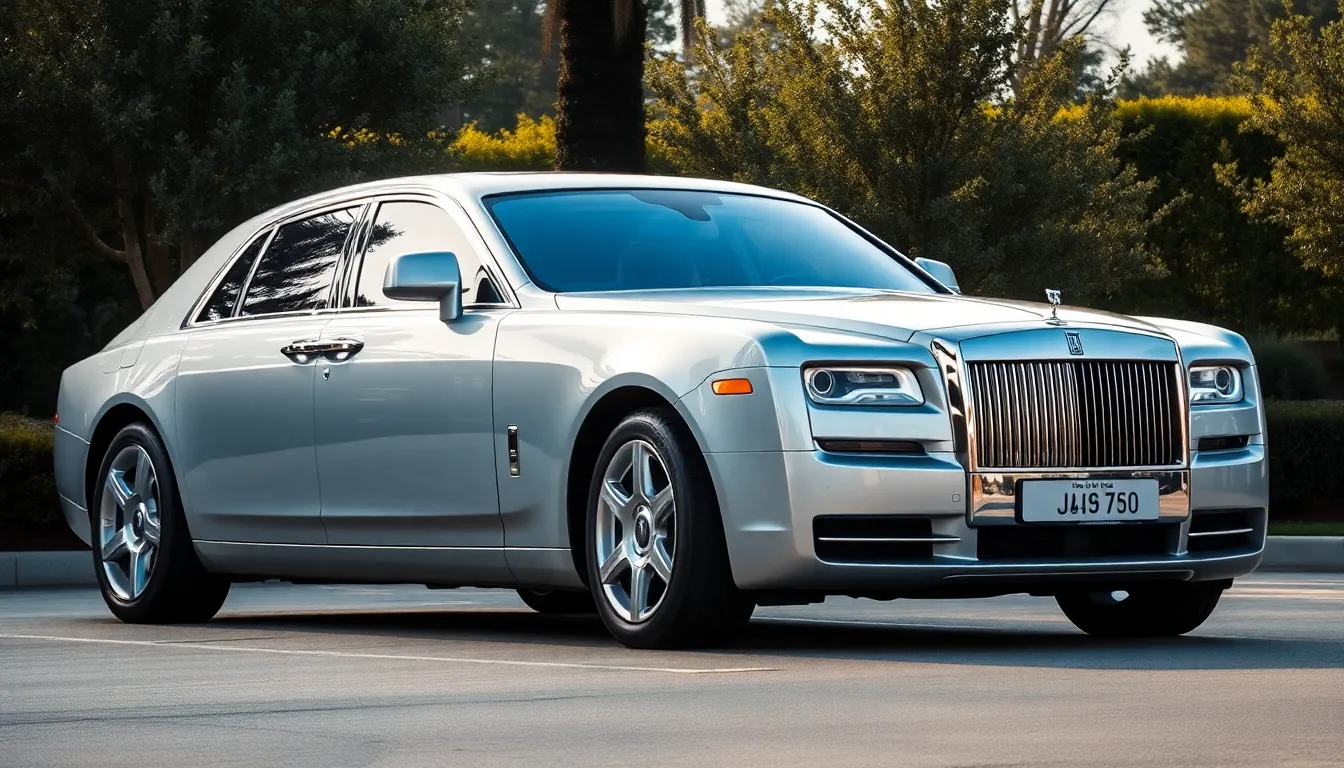
Luxury psychology research demonstrates that visual cues trigger emotional responses within 0.05 seconds of initial exposure. Rolls Royce’s aesthetic deliberately engages these psychological mechanisms through carefully orchestrated design elements that communicate prestige, exclusivity, and achievement.
The brand’s consistent use of vertical proportions activates psychological associations with power and status. Extended wheelbase dimensions create visual weight that subconsciously signals stability and importance to observers. Chrome detailing reflects light in patterns that draw attention and establish focal points, triggering recognition responses in the human brain.
Color psychology plays a fundamental role in Rolls Royce’s emotional impact. Deep metallic finishes and rich paint formulations create depth perception that suggests quality and craftsmanship. Custom paint options allow owners to express individual identity while maintaining brand recognition through signature design elements.
| Psychological Element | Impact on Perception | Rolls Royce Application |
|---|---|---|
| Vertical proportions | Authority and power | Extended grille height, upright stance |
| Reflective surfaces | Premium quality perception | Hand-polished chrome, mirror finishes |
| Tactile materials | Emotional connection | Leather textures, wood grain patterns |
| Symmetrical design | Trust and reliability | Balanced proportions, centered elements |
Interior psychology focuses on creating environments that reduce stress and enhance comfort. Soft leather textures activate positive tactile responses, while carefully selected color combinations create calming atmospheres. The Starlight headliner triggers wonder and aspiration by mimicking natural phenomena that humans find psychologically soothing.
Social signaling theory explains why Rolls Royce’s understated elegance resonates with luxury consumers. Subtle status indicators communicate wealth without ostentation, appealing to psychologically sophisticated buyers who prefer refined displays of success. The Spirit of Ecstasy serves as a universally recognized symbol that instantly conveys brand heritage and exclusivity.
Craftsmanship visibility creates psychological satisfaction through the appreciation of human skill and attention to detail. Hand-stitched leather and matched wood veneers provide tangible evidence of quality that justifies premium pricing and creates emotional bonds between owners and their vehicles.
How Rolls Royce Aesthetic Influences Modern Luxury Design
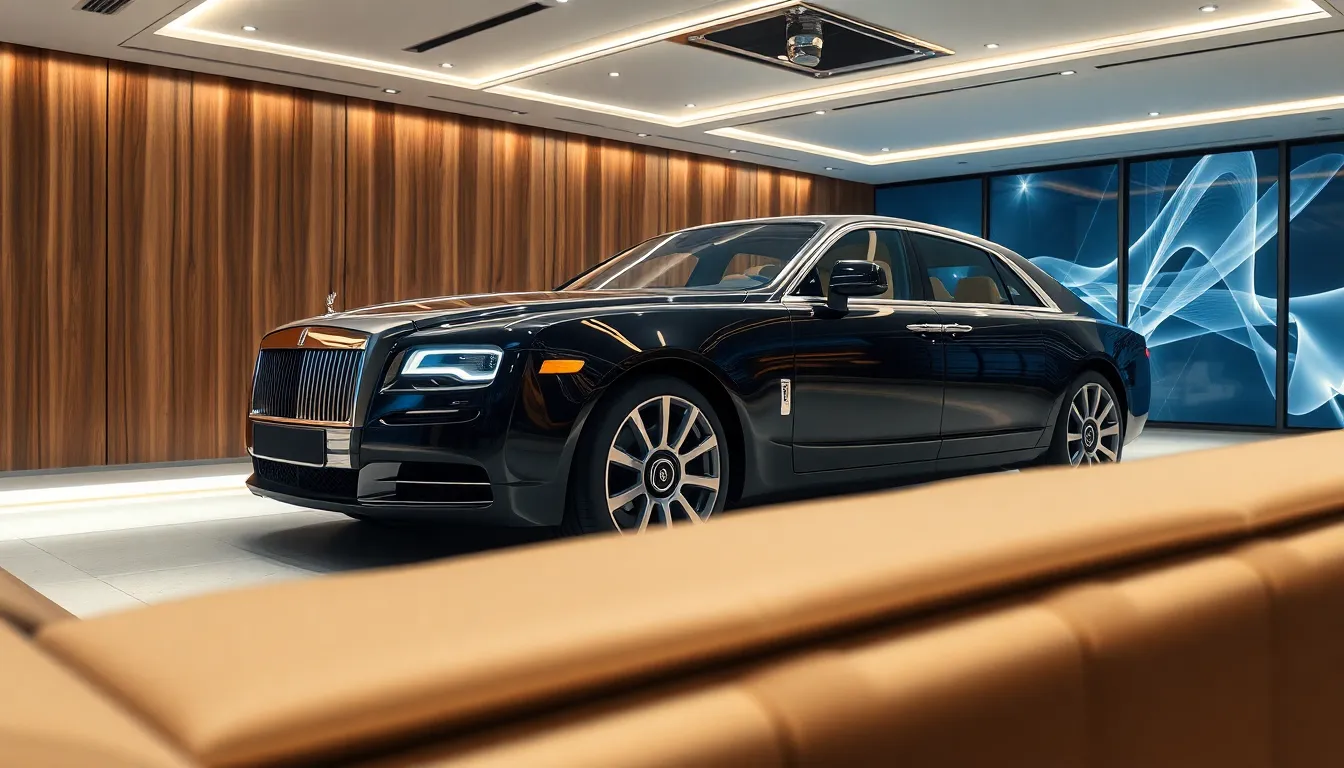
Rolls Royce aesthetic principles shape contemporary luxury design across multiple industries through its mastery of understated elegance and refined proportions. Modern luxury brands adopt the company’s approach to vertical design elements, incorporating extended proportions and commanding silhouettes that communicate authority without ostentation.
Architecture firms reference Rolls Royce’s design language when creating luxury residential properties, utilizing clean vertical lines and substantial proportions to establish presence. Hotels like The Ritz-Carlton and Four Seasons incorporate similar aesthetic principles in their lobby designs, featuring extended ceiling heights and carefully selected materials that mirror the automotive brand’s interior craftsmanship.
Contemporary Luxury Products Adopting Rolls Royce Elements
High-end watch manufacturers integrate Rolls Royce’s aesthetic philosophy through refined case proportions and hand-finished details. Patek Philippe and Vacheron Constantin employ similar material selection processes, sourcing premium metals and applying hand-polishing techniques that echo the automotive brand’s chrome finishing methods.
Luxury yacht designers reference Rolls Royce’s exterior proportions when creating vessel silhouettes, incorporating extended profiles and refined detailing. Ferretti Group and Azimut use comparable design languages in their flagship models, featuring clean lines and substantial presence that commands attention.
Premium furniture manufacturers adopt the brand’s interior design principles through material selection and craftsmanship standards. Companies like Poltrona Frau and B&B Italia incorporate hand-selected leather treatments and wood finishing techniques that parallel Rolls Royce’s interior specification processes.
Modern Technology Integration Following Rolls Royce Standards
Contemporary luxury brands carry out technology integration methods pioneered by Rolls Royce’s seamless interface design. Tesla’s Model S Plaid incorporates similar hidden technology approaches, featuring integrated systems that maintain clean aesthetic lines while providing advanced functionality.
Luxury smartphone manufacturers reference the automotive brand’s material finishing standards when developing premium devices. Vertu and Goldgenie apply comparable hand-polishing techniques and premium material selections that echo Rolls Royce’s attention to tactile quality.
High-end audio equipment designers adopt similar acoustic engineering principles, creating products that prioritize refinement over aggressive performance characteristics. Bang & Olufsen and Meridian incorporate design languages that emphasize understated sophistication rather than bold visual statements.
Brand Identity Principles Influencing Luxury Marketing
Modern luxury brands adopt Rolls Royce’s marketing philosophy of exclusivity through scarcity and personalization. Limited edition product releases across industries now follow similar strategies, creating emotional connections through bespoke customization options rather than mass market appeal.
Digital luxury experiences incorporate the automotive brand’s customer journey principles, emphasizing personal consultation and detailed specification processes. Luxury real estate platforms and high-end jewelry brands now provide similar configurator experiences that mirror Rolls Royce’s bespoke ordering systems.
Corporate identity designs across luxury sectors reference the brand’s visual consistency standards, maintaining design languages that evolve subtly while preserving core recognition elements. This approach influences everything from packaging design to retail environment architecture, establishing long-term brand recognition through consistent aesthetic application.
Conclusion
When we examine the Rolls-Royce aesthetic we’re witnessing more than automotive design—we’re experiencing a philosophy that has shaped luxury standards across industries. The brand’s unwavering commitment to excellence continues to inspire designers and craftspeople worldwide.
We can see how this distinctive approach to luxury has created a blueprint that others aspire to follow. From architecture to technology the Rolls-Royce influence extends far beyond the automotive area establishing benchmarks for sophistication and quality.
The enduring power of this aesthetic lies in its ability to evolve while maintaining its core values. As we look toward the future we’re confident that Rolls-Royce will continue defining what true luxury means for generations to come.
Frequently Asked Questions
What makes Rolls-Royce design so timeless?
Rolls-Royce design remains timeless through its commitment to classical proportions, refined elegance, and consistent visual language that transcends fleeting trends. The brand has maintained core aesthetic principles for over a century while incorporating subtle evolutionary elements that keep each model contemporary, creating a harmonious blend of traditional British craftsmanship and modern innovation.
What are the three most iconic Rolls-Royce design elements?
The three defining elements are the Spirit of Ecstasy figurine (sculpted in 1911 and still the most recognizable automotive mascot), the Pantheon grille with its distinctive vertical chrome slats, and the hand-crafted interior featuring meticulously selected materials like premium leather and wood veneers that showcase traditional British craftsmanship.
How has Rolls-Royce design evolved over the decades?
While maintaining core aesthetic principles, Rolls-Royce has evolved through distinct eras. Classic models like the Silver Ghost established foundational elements, post-war Silver Cloud series showed evolved sophistication, and modern models like Phantom, Ghost, and Wraith reinterpret classic aesthetics using advanced materials and technologies while preserving the brand’s commanding presence.
What customization options does Rolls-Royce offer?
Rolls-Royce offers extensive bespoke customization including over 44,000 paint samples, hand-painted coachlines, custom color formulations, premium leather in various colors, multiple wood finishing techniques, unique features like Starlight headliners, and custom embroidery. This ensures each vehicle becomes a personalized masterpiece reflecting individual customer preferences.
How does Rolls-Royce influence other luxury industries?
Rolls-Royce’s aesthetic principles influence architecture, luxury hotels, high-end watches, yachts, and premium technology products. Many brands adopt its mastery of understated elegance, refined proportions, and quality materials. The brand’s marketing emphasis on exclusivity and personalization has also become prevalent across luxury sectors.
What makes Rolls-Royce interiors so special?
Rolls-Royce interiors feature hand-selected premium materials including the finest leather and wood veneers, chosen through meticulous selection processes. Unique elements like Starlight headliners, custom embroidery, and bespoke detailing transform each interior into a work of art, reflecting traditional craftsmanship combined with modern luxury expectations.

